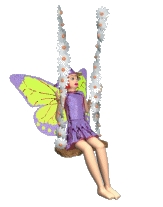Now we have clear that we are going to follow the Grounded theory. So, we designed the following outline based on the time we have and on the Auerbach, C. F. & Silverstein L. B. (2003) theory.
Every researcher is going to analyze the data separately and then they will compare the findings.
What- when?
We are going to base our data analysis on Grounded theory. The choice of this approach can be sustained by Auerbach, C. F. & Silverstein L. B. (2003). The grounded theory was chosen because it consists of a set of steps that guarantee the explanation of the data gathered in terms of outcomes. The basic idea of the grounded theory approach is to read and discover categories and their interrelationships. In this way we are going to understand and interpret phenomena we engage in our context.
So, In order to discover the patterns from the different instruments, we are going to follow the coding procedure:
• Relevant text
• Repeating ideas
• Themes
• Theoretical constructs
• Theoretical narrative
1. We are going to choose which parts of information we are going to include in our analysis
2. Then, we are going to identify repeating ideas
3. Then, we are going to create a list and named every item
4. After that, we are going to organize themes by grouping repeating ideas into coherent categories
5. Then, we will organize the themes into more abstract groups.
6. Finally, we are going to create a theoretical narrative by describing the process that research participants reported in terms of theoretical constructs.
We are going to develop all the stages from March the 1st -10th /2010.
How?
1) We are going to read the data collected from the instruments to identify the main and repetitive ideas
2) Then, we are going to design a matrix with the instruments and instruments applied the chosen categories
3) After that, we are going to write in the matrix the evidences to support the categories
4) Then, we are going to identify the important themes and if we have the support for each team we are going to reject them
5) We are going to compare information with the researcher colleague
This is the final version of the outline to analyse the collected Data.
THIS IS OUR OUTLINE FOR DATA ANALYSIS
Given that we are working with different roles in the research project, we will analyze the data in the same way. It means, the teacher – researcher will analyze and find the possible categories and themes and the observer –researcher will do the same. When we finish the analysis, we will compare our finding in order to choose the appropriate ones.
What- when?
We are going to base our data analysis on Grounded theory. The choice of this approach can be sustained by Auerbach, C. F. & Silverstein L. B. (2003). The grounded theory was chosen because it consists of a set of steps that guarantee the explanation of the data gathered in terms of outcomes. The basic idea of the grounded theory approach is to read and discover categories and their interrelationships. In this way we are going to understand and interpret phenomena we engage in our context.
So, In order to discover the patterns from the different instruments, we are going to follow the coding procedure:
• Relevant text
• Repeating ideas
• Themes
• Theoretical constructs
• Theoretical narrative
1. We are going to choose which parts of information we are going to include in our analysis
2. Then, we are going to identify repeating ideas
3. Then, we are going to create a list and named every item
4. After that, we are going to organize themes by grouping repeating ideas into coherent categories
5. Then, we will organize the themes into more abstract groups.
6. Finally, we are going to create a theoretical narrative by describing the process that research participants reported in terms of theoretical constructs.
We are going to develop all the stages from March the 1 -31 /2010.
How?
1) We are going to read the data collected from the instruments to identify the main and repetitive ideas
2) Then, we are going to design a matrix with the instruments and instruments applied the chosen categories
3) After that, we are going to write in the matrix the evidences to support the categories
4) Then, we are going to identify the important themes and if we have the support for each team we are going to reject them
5) We are going to compare information with the researcher colleague
lunes, 1 de marzo de 2010
Suscribirse a:
Enviar comentarios (Atom)

No hay comentarios:
Publicar un comentario